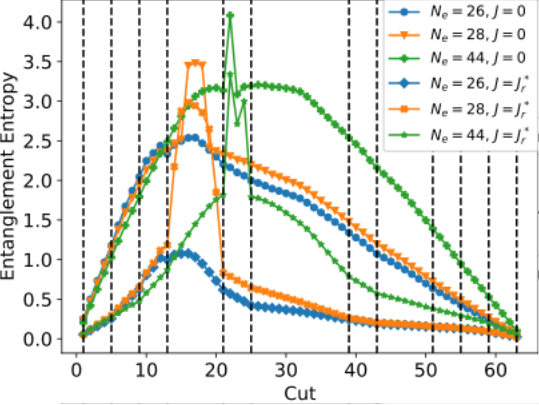Entanglement reduction via transcorrelation
October 15, 2025 - Ben Corbett and Akimasa Miyake

Accurately calculating properties of two-dimensional materials is a central challenge of condensed matter physics. Advances in this area benefit a diverse array of technologies from semi-conductor design to the search for high temperature superconductors. Among all others, the ground state energy is perhaps the most important property and is the metric by which the many competing computational methods are compared. One such method, the density matrix renormalization group algorithm (DMRG), is the go-to tool for one-dimensional systems, however, it struggles to capture the larger area-law entanglement of two-dimensional systems. One way to reduce the entanglement is the transcorrelated method, which has recently been paired with DMRG to study the ground state of the two-dimensional Fermi-Hubbard model with great success.
Corbett and Miyake build off this prior work to further push the scale, accuracy and understanding of transcorrelated DMRG calculations for the Fermi-Hubbard model. Through highly optimized algorithms the pair were able to examine systems of up to 144 sites, four times the previous work. Furthermore, they developed a framework to optimize the transcorrelated ansatz in a self-consistent manner, smoothing out and accelerating the convergence to the ground state energy. Finally, the authors discovered that while the transcorrelated method does a great job reducing the entanglement away from the Fermi surface, it does little to suppress the strong entanglement within the Fermi surface present in open shell systems. All told, using transcorrelated DMRG the authors were able to reduce the error in the ground state energy by 2.4x-14x using transcorrelated DMRG, with the largest improvement for a closed shell system.
Read the paper here: https://doi.org/10.1103/nzrt-l2j1